5
Mars Exploration Architecture
MARS EXPLORATION PROGRAM BACKGROUND
Mars has been a high-priority exploration objective and holds a special place in the solar system because it addresses aspects of three important themes in the 2011 planetary science decadal survey, Vision and Voyages for Planetary Science in the Decade 2013-2022 (NRC, 2011). It is the only terrestrial planet besides Earth that preserves a readily accessible record of environments where life could have developed. Whether life did or did not develop there has implications for the size of the habitable zone and for the prevalence of life among small extrasolar terrestrial planets.
Study of Mars’s early history and evolution informs the theme “Building New Worlds,” including the questions of what governed the accretion, supply of water, chemistry, and internal differentiation of the inner planets, the evolution of their atmospheres, and the role played by large impacts; the theme “Planetary Habitats,” including the questions of primordial sources of organic matter and whether organic synthesis continues today; and the theme “Solar System Workings,” including the questions of how the myriad chemical and physical processes that shaped the solar system operated, interacted, and evolved over time.
These Vision and Voyages themes are echoed in the first three goals of the Mars Exploration Program Analysis Group (MEPAG) Science Goals document: (1) to study preservation of biosignatures in past habitable environments and the possible presence of extant life in subsurface or transient near-surface habitable environments; (2) to study the history of ancient climate and the processes that changed ancient wetter into modern drier Mars, and martian climate change in the recent past; and (3) to study the history of Mars’s crust and its interaction with water, and the evolution of Mars’s crust and interior.
Furthermore, Mars is the only terrestrial planet beyond the Earth-Moon system that humans may visit or occupy in the foreseeable future. This fact maps to the fourth MEPAG goal, preparing for human exploration by providing knowledge of Mars sufficient to design and implement a human mission.
Mars exploration advanced rapidly from 1965 to 1976, with a regular cadence of missions including Mariners 4, 6, 7, and 9 and Vikings 1 and 2. Inability to follow up from Viking due to high cost and lack of political will led to a stagnation of Mars science. The eventual follow-up 18 years later, Mars Observer, failed during Mars orbit insertion. (See Figures 5.1 and 5.2.)
After the failure of Mars Observer, the National Aeronautics and Space Administration (NASA) sent additional spacecraft to Mars. Key missions include Pathfinder/Sojourner, Mars Global Surveyor (MGS), Mars Odyssey, the Mars Exploration Rovers (MERs) Spirit and Opportunity, Mars Reconnaissance Orbiter (MRO), Phoenix, then
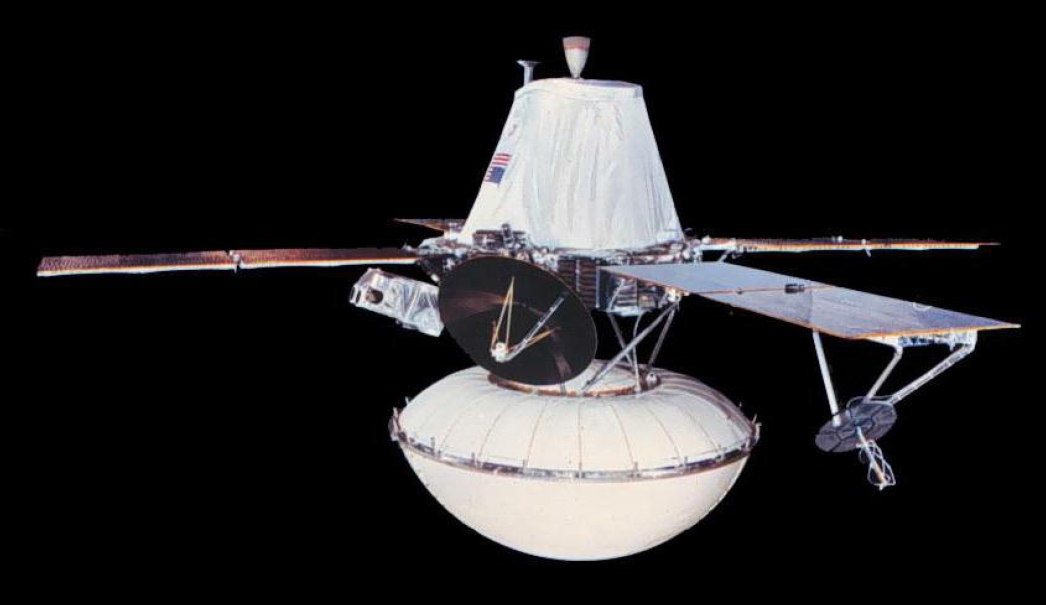
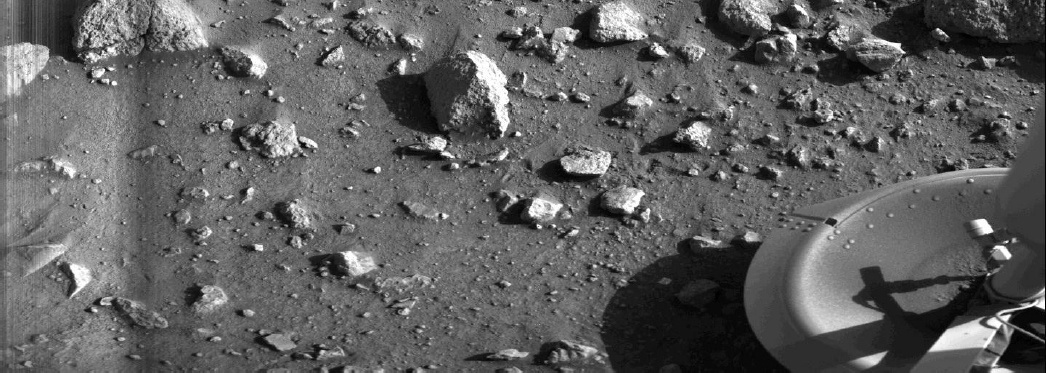
Mars Science Laboratory (MSL) Curiosity, and the Mars Atmosphere and Volatile Evolution Mission (MAVEN). There were two high-profile setbacks in the late 1990s with the failures of Mars Polar Lander and Mars Climate Orbiter. The success of the Mars Exploration Program (MEP) has resulted from pursuit of a logical sequence of science and mission objectives, where new findings stimulate new investigations. For example, MGS identified crystalline hematite, possibly formed through aqueous processes on the surface. That exposure was selected as the landing site for MER/Opportunity, which characterized that ancient aqueous environment. MRO has used
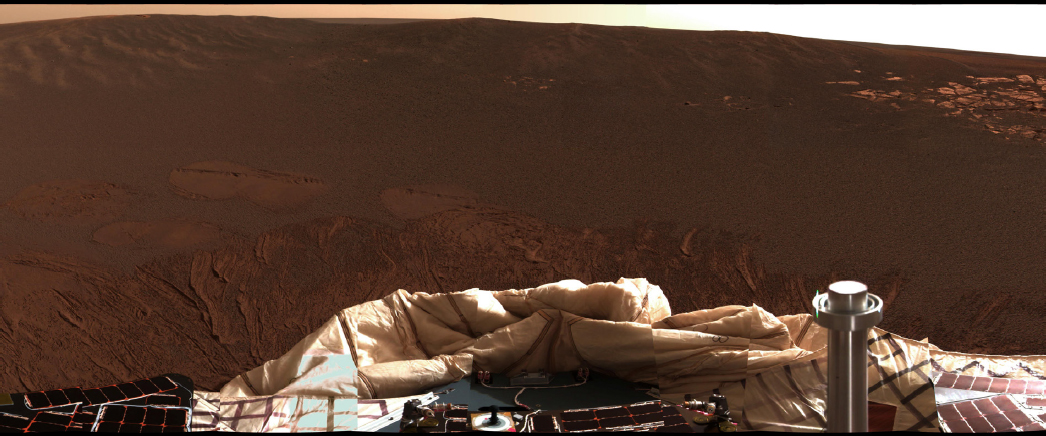
high-resolution imagery to find a plethora of ancient aqueous environments and certify sites for safety. The Mars Odyssey Thermal Emission Imaging System (THEMIS) instrument, along with MRO’s High-Resolution Imaging Science Experiment (HiRISE) instrument, paved the way for landing site selection for Phoenix in 2008, and these orbital assets have been essential for selecting landing sites for MSL in 2011, and ExoMars and Mars 2020. (See Figure 5.3.)
The MEP’s discovery of widespread sedimentary and hydrothermal deposits that formed in apparently habitable environments, with the potential to preserve biosignatures, led to the identification of MAX-C as the highest-priority large strategic (flagship) mission in Vision and Voyages. Specifically, a sequence of three large strategic missions was envisioned to complete Mars sample return (MSR): (1) MAX-C, a geology/caching rover, to collect, document, and cache samples from an ancient habitable environment with strong potential to have preserved biosignatures; (2) a fetch rover to collect the sample cache coupled with a Mars Ascent Vehicle (MAV) to place the cache in Mars orbit; and (3) retrieval of the cache and return to Earth or near-Earth space by a round-trip Sample Return Orbiter (SRO). Vision and Voyages also recommended technology development for the fetch rover, MAV, SRO, and a curatorial/containment facility for returned samples.
In addition, Vision and Voyages made a number of associated recommendations:
- New Frontiers (NF) mission concepts were considered that would characterize polar deposits and volatiles, or that would deploy a global geophysical network. Neither was included as a recommended NF mission.
- Earlier studies, such as the National Research Council’s An Astrobiology Strategy for the Exploration of Mars (NRC, 2007), endorsed in situ studies as an important component of exploration for past martian life. Nevertheless, Vision and Voyages did not recommend additional rovers conducting in situ investigations. Instead, it was the Decadal Survey Committee’s judgment that the more complete and detailed information possible from analysis of returned samples in terrestrial laboratories warranted making sample return the predominant thrust of Mars exploration.
- It was recommended that Discovery be opened to include all solar system targets, including Mars. This was implemented, and the next Discovery mission—Interior Exploration Using Seismic Investigations, Geodesy, and Heat Transport (InSight)—is a single-node Mars geophysical investigation. (See Figure 5.4.)
Since Vision and Voyages was written, scientifically compelling new discoveries about Mars have continued to be made. These significantly change the scientific understanding of Mars as a planet from what it had been in ~2010 during the writing of Vision and Voyages:
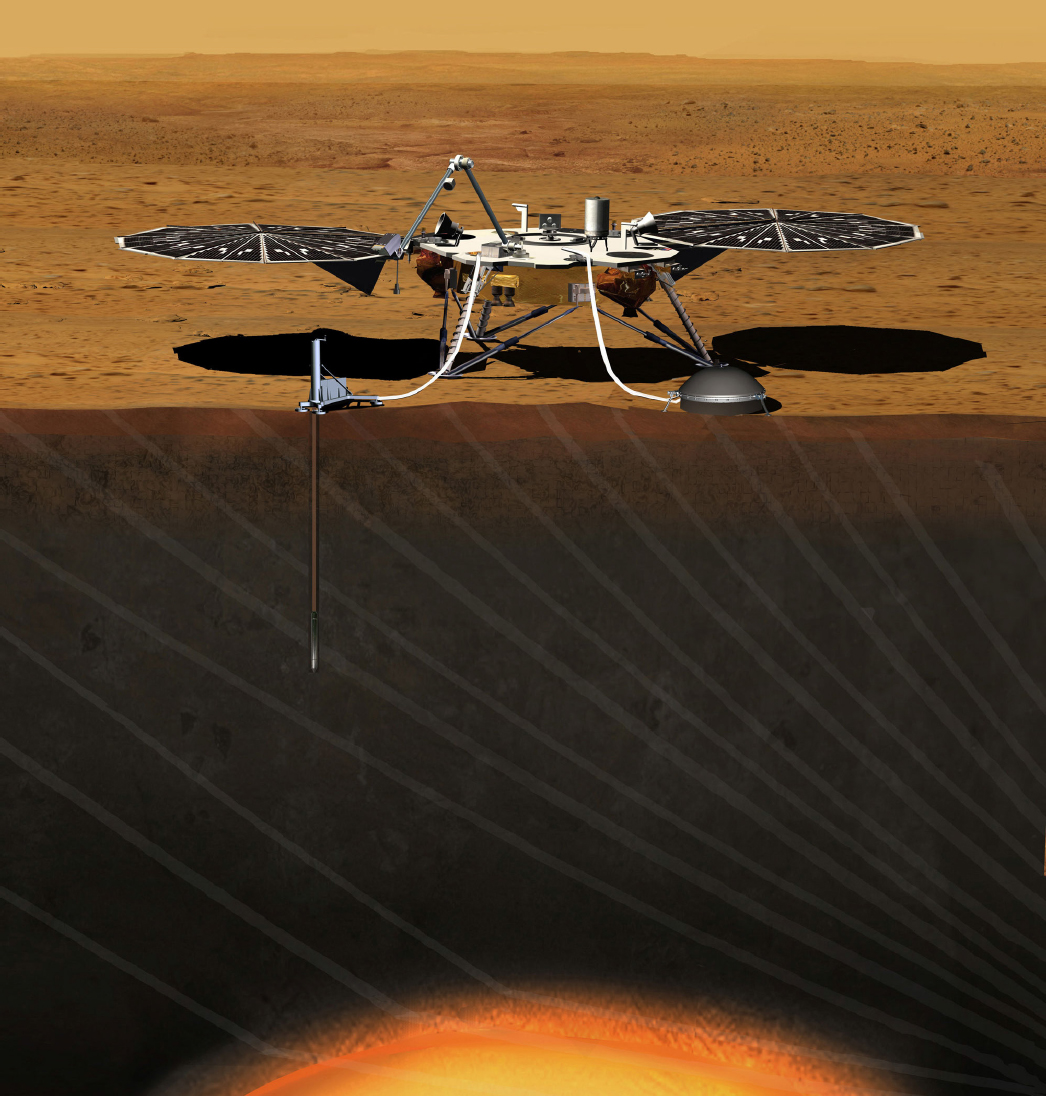
- Modern Mars is dynamic, with active aeolian sedimentation, unexplained release and consumption of methane, recurrent slope lineae (RSL) formed by a mechanism that may involve extant brines or deliquescence, and fluvial-like sedimentation driven by ablation of seasonal CO2 ice—a process with no Earth analog.
- Ancient Mars contained at least a dozen distinct liquid water environments, of which half were possibly habitable. This is a much greater diversity than was recognized by Vision and Voyages. They are recorded by a surprising abundance and diversity of hydrated mineral assemblages and landforms indicative of lacustrine, pedogenic, alluvial, and hydrothermal environments. A single sample return mission will explore only one or, at most, two of these environments.
- There is widespread, shallow pure ice at midlatitudes, possibly the remnant of late Amazonian ice ages, or possibly the result of mobilization and concentration of ground ice.
- A reservoir of frozen CO2 is buried in the polar caps. If released, it could double atmospheric pressure.
- A thicker ancient atmosphere was lost to space, primarily by solar-driven processes.
The newly discovered water resources bound in minerals and as shallow segregated ground ice represent a profound overlap in the objectives of scientific investigation of Mars and preparation for future human exploration.
PRESENT STATUS OF THE MARS EXPLORATION PROGRAM
NASA’s MEP is a science-driven, technology-enabled study of Mars as a system meant to understand the following:
- The formation and early evolution of Mars as a planet,
- The history of geological and climate processes that have shaped Mars through time,
- The potential for Mars to have hosted life (its “biological potential”), and
- The surface environments and resources relevant to future exploration of Mars by humans.
The MEP’s evolving science strategy is meant to be consistent with the priorities outlined in Visions and Voyages, which are formed into specific requirements applied to individual missions. It receives science input from interactions with the planetary and Mars science community (primarily through MEPAG).
Mars Exploration Program History and Organization
The MEP was begun in 1994, initially under the name Mars Surveyor Program. NASA assigned the lead role for the MEP implementation to the Jet Propulsion Laboratory (JPL). The MEP explores Mars on behalf of NASA’s Science Mission Directorate (SMD). It currently operates rovers and orbiters on and around Mars, supports Mars missions conducted by U.S. and international partners, and is formulating and developing future missions. MEP missions are organized into a program, and mutually support each other. Scientific discoveries by one mission drive the formulation of the scientific foci of future missions. Acquired data crucially inform the implementation of future missions. For example, orbital missions like MGS, Odyssey, and MRO provide data for identifying, characterizing, and certifying landing sites for future missions like Phoenix, MSL, ExoMars, and Mars 2020, and landed assets provide ground truth for orbital remote sensing. (See Figures 5.5, 5.6, and 5.7.) Measurements of the atmosphere made by orbiters are crucial to supporting the entry, descent, and landing (EDL) of surface vehicles. Observations by landed assets are interpreted and placed into context using research results from orbital measurements, thus informing an understanding of Mars as a system. In addition, MEP missions develop and demonstrate engineering capabilities that enable future missions, and MEP orbiters enhance the scientific return of landed missions by serving as telecommunication relays, enabling significant increases in data return.
To support an integrated program structure, the MEP carries out a number of activities that provide long-term investments for the future, including the following:
- The Mars Data and Analysis Program (MDAP) is a research and analysis effort that sponsors detailed studies of data returned from Mars missions that yield fundamental scientific results and help shape future MEP missions. Research conducted through MDAP formulates new science questions for Mars and tests current hypotheses.
- The Program Formulation Office conducts advanced studies of future missions. Studies and planning for these missions, as well as identification of technology needed to implement them, are the focus of long-range technology investments. Advanced studies also address Mars telecommunication capabilities and other programmatic needs (e.g., meteorological measurements for landers, landing site certification). These needs can be met through a mixture of directed and competed missions. Future mission concepts also address preparations for the future human exploration of the martian system.
- The MEP supports implementation of both directed and competed missions. The latter have included the Phoenix mission, which landed in the northern polar region of Mars to study ice, and the MAVEN mission, which is quantifying the rate of escape of atmospheric gases from the planet and implications for the ancient martian climate. Both were selected for flight under the former Mars Scout program.
Mars Exploration Program Missions in Flight and Development
The history of MEP missions illustrates the benefits of an organized program and funding line for conducting hypothesis-driven science, where one mission’s results inform results of the other missions. For example, Mars
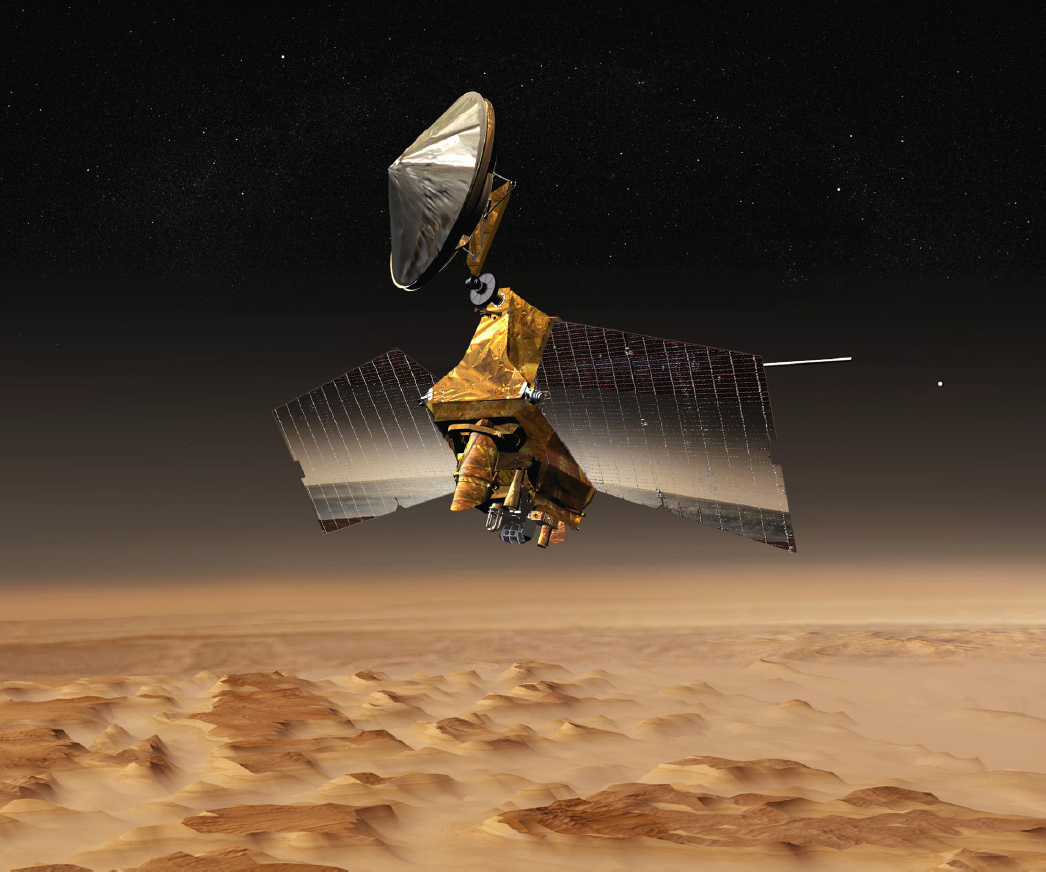
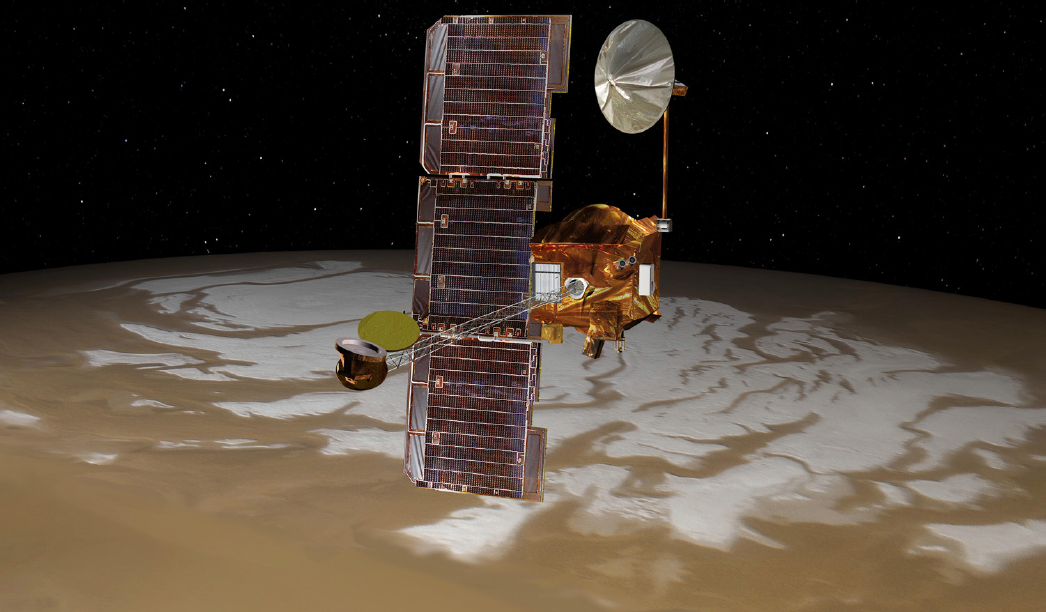
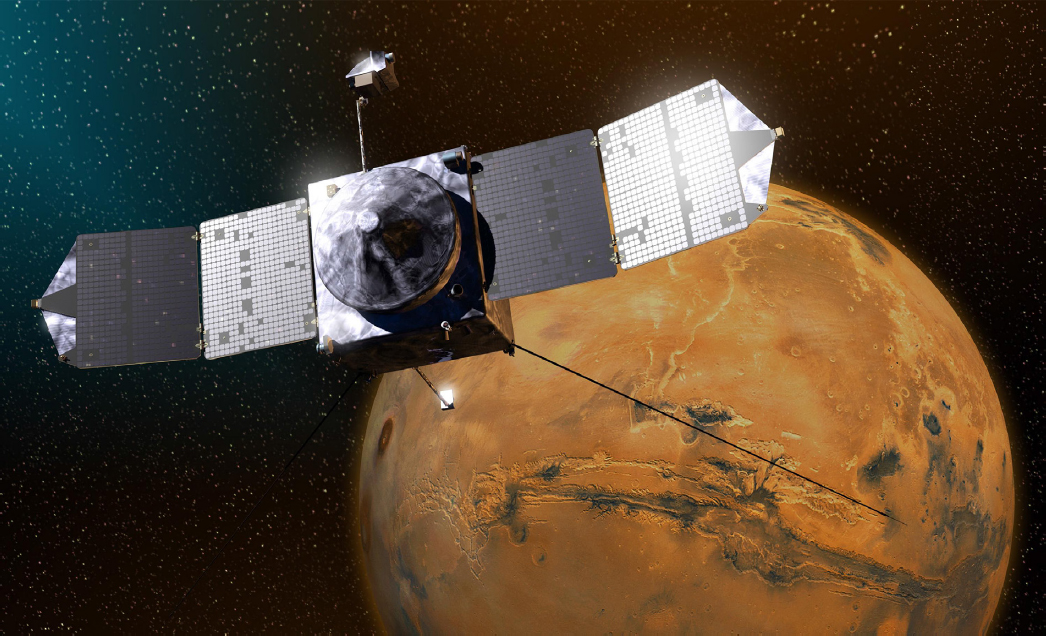
Pathfinder pioneered the airbag landing system later used by the MER rovers Spirit and Opportunity, and its Sojourner rover helped in the development of rover operations. MGS achieved Mars orbit in 1997. It carried the Thermal Emission Spectrometer (TES), Mars Orbiter Laser Altimeter (MOLA), Mars Orbiter Camera (MOC), and Magnetometer (MAG) and Electron Reflectometer (ER). Its accomplishments included the first global map of mineralogy of surface materials, the beginning of acquisition of a climatological record of atmospheric dust and ice aerosols and water vapor, a highly accurate global topographic map, thousands of high-resolution images, and a map of magnetization of crustal rocks. These data enabled discovery of widespread sedimentary rocks, including the hematite-rich materials explored by MER/Opportunity. MOC images revealed active formation of gullies by some type of fluid flow, initially hypothesized to involve water. MAG mapping of crustal magnetization showed that early Noachian rocks formed in a magnetic field that subsequently shut down.
Mars Odyssey orbiter entered orbit in 2001. Its Gamma Ray Spectrometer mapped elemental composition of surface materials, and its Neutron Spectrometer detected large amounts of hydrogen in the upper meter of regolith at high latitudes that can only be explained by a high abundance of subsurface ice. That ice was later explored by Phoenix. Odyssey’s THEMIS discovered olivine-rich igneous rocks, chloride-rich sedimentary deposits, and midlatitude mantles interpreted as relict layers of ice-rich airfall deposits formed during a late Amazonian period of high obliquity.
In 2004 the MER rovers Spirit and Opportunity landed at Gusev crater and Meridiani Planum, respectively, to investigate a paleolake basin known from Viking images and hematite-rich sediments found by TES. Spirit found no lake sediments, but on its traverse to older terrain found sulfate- and silica-rich materials likely formed in a hydrothermal system. Opportunity found that the hematite resides in late Noachian sulfate-rich sedimentary deposits interpreted to have been precipitated from discharge of saline groundwater. It then traversed to clay-bearing early Noachian rocks discovered by MRO, and found that those rocks formed by partial alteration of a basaltic protolith in a subsurface groundwater environment.
MRO, in orbit since 2006, is equipped with the HiRISE, Compact Reconnaissance Imaging Spectrometer for Mars (CRISM), Shallow Radar (SHARAD), Mars Climate Sounder (MCS), and Mars Color Imager (MARCI). MRO has made numerous discoveries about Mars, including exposures of aqueously altered rocks that record a dozen diverse ancient wet environments, deposits of shallow, nearly pure water ice present at mid- and high latitudes, active migration of dunes at rates that indicate Earth-like sand fluxes, a buried deposit of CO2 ice in the north polar layered deposits that—if released—would double atmospheric pressure, interannual and seasonal characteristics of atmospheric temperature and aerosols, and dynamic processes in the residual and seasonal CO2 ice caps. MRO’s MCS, MARCI, and CRISM instruments—together with Mars Odyssey/THEMIS—have extended the climatological record begun by MGS to over 10 Mars years. Perhaps the most provocative MRO finding is the presence of RSL, downslope flow features that appear in summer and may involve brine or deliquescent salts, but could also be dust avalanches.
In 2008 Phoenix landed in the north polar region of Mars after an extensive search for a safe site by HiRISE. Its robotic arm dug into the Martian soil, and the presence of shallow, nearly pure water ice was confirmed. It also discovered that perchlorate salts are prevalent in the regolith. Perchlorates are powerful freezing point depressants and are hypothesized to be involved in formation of RSL; they can react with organics and may explain the nondetection of organics by the Viking landers.
The MSL rover Curiosity landed at Gale crater in August 2012 at a site selected primarily using MRO data. Its investigations include the ChemCam laser chemical sampler that can deduce the make-up of rocks at a distance of up to 7 m using laser-induced breakdown spectroscopy (LIBS), the CheMin and Sample Analysis at Mars (SAM) compositional experiments, and the Mars Hand Lens Imager (MAHLI). MSL’s mineral and chemical analyses of the Sheepbed mudstone conclusively demonstrated the presence of a habitable lake environment on early Mars, with low salinity, moderate pH, biologically necessary elements, and an energy source in the form of mixed oxidation state Fe- and S-bearing phases that could support chemolithotrophic metabolism. SAM initially detected a lower methane abundance than could be explained given meteoritic carbon inputs, followed by elevated then promptly decaying methane abundances. Either a geologic or a biologic source is episodically releasing the gas.
MAVEN reached Mars in 2014 with the objectives of observing and quantifying the influence of the Sun on upper-atmospheric structure and behavior, and of measuring the present-day escape rates of atmospheric species.
These results plus modeling enable inference of the past history of atmospheric escape and the total amount of gas that has been removed to space through time. Results and modeling to date suggest that a half bar or more of atmosphere has been removed since the early Noachian, providing an explanation for the change in climate inferred from observations of the geology and mineralogy of the surface.
The final approved MEP mission is the Mars 2020 rover, a version of the Mars Astrobiology Explorer-Cacher (MAX-C) that was prioritized within the decadal survey, modified to reduce its cost. Mars 2020 will take the first step toward MSR by collecting and caching small core samples from a site containing the two highest priority materials for sample return, unaltered volcanic materials and either lacustrine or hydrothermal sediments emplaced in a past habitable environment that may be capable of preserving biosignatures. Careful documentation of the samples’ geologic context will be provided by a combination of remote and contact investigations. The remote investigations include Mastcam-Z, a panoramic and stereoscopic camera system with the ability to zoom; SuperCam, which provides imaging, chemical analysis from LIBS, and mineralogy from reflectance and Raman spectroscopy; and the Radar Imager for Mars’s Subsurface Experiment (RIMFAX), a ground-penetrating radar that will provide centimeter-scale resolution of the shallow subsurface. Contact investigations include the Planetary Instrument for X-ray Lithochemistry (PIXL) to determine fine-scale elemental composition, and Scanning Habitable Environments with Raman and Luminescence for Organics and Chemicals (SHERLOC), which will employ fine-scale imaging and an ultraviolet (UV) Raman to determine fine-scale mineralogy and search for organic compounds.
Mars Exploration Program Future Plans
Figures 5.8 and 5.9 illustrate the MEP budget from 2000 to present. The MEP budget includes costs for spacecraft development, operation of existing spacecraft, and analysis of returned data. During the 2010s, operation of missions beyond their nominal durations into extended missions has been highly beneficial and cost-effective, with major new discoveries being made after the prime mission using existing flight hardware. During the same period, the MEP has shifted to more expensive, large-rover missions to address scientific questions posed by orbiter missions, while simultaneously shouldering the cost of operating existing Mars spacecraft. A combination of the focus on MSR, the constrained budget to formulate it, and the lack of formal approval for the Fetch Rover/MAV and SRO has resulted in lack of a defined schedule and budget to implement MSR and lack of a long-term plan besides sample return. The net effect has been two main consequences:
- All Mars surface missions listed above—plus the InSight Discovery mission—rely on Mars orbital missions now in flight for a UHF relay to return data to Earth. Of all NASA orbiters with this capability, only MAVEN has been operating less than 12 years. MRO is the major relay asset, and it is aging. The lack of a new orbiter in development means that the Mars telecommunications infrastructure is not being renewed, and is subject to aging and potential failure.
- Chapter 2 described a variety of new Mars discoveries since the publication of Vision and Voyages, including the diversity of wet environments on ancient Mars beyond the one or possibly two that will be sampled by Mars 2020, the occurrence of widespread shallow, nearly pure ice, and the possibility of modern briny flows. There are no current MEP plans for follow-up investigation of these or other findings, either for hypothesis-driven science that has been the hallmark of the MEP, or for assessment of resources for future human exploration.
MEPAG has been keenly aware of these shortcomings in future plans, and in 2015 developed a concept for a next Mars orbiter to replenish the Mars telecommunications infrastructure and perform follow-up investigations of new discoveries since Vision and Voyages. NASA has not yet been successful in including such a mission in its budget.1
___________________
1 Such an orbiter would cost on the order of a Discovery-class mission, although it could cost more or less depending on requirements and whether it includes scientific instruments.
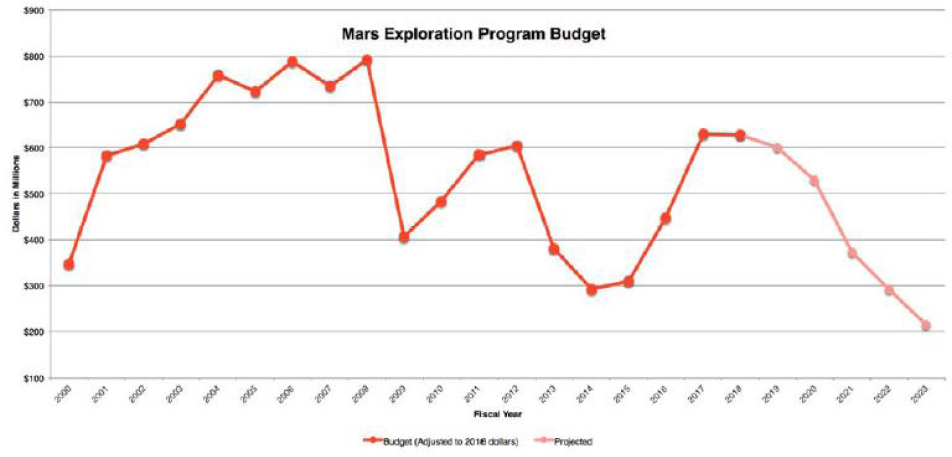
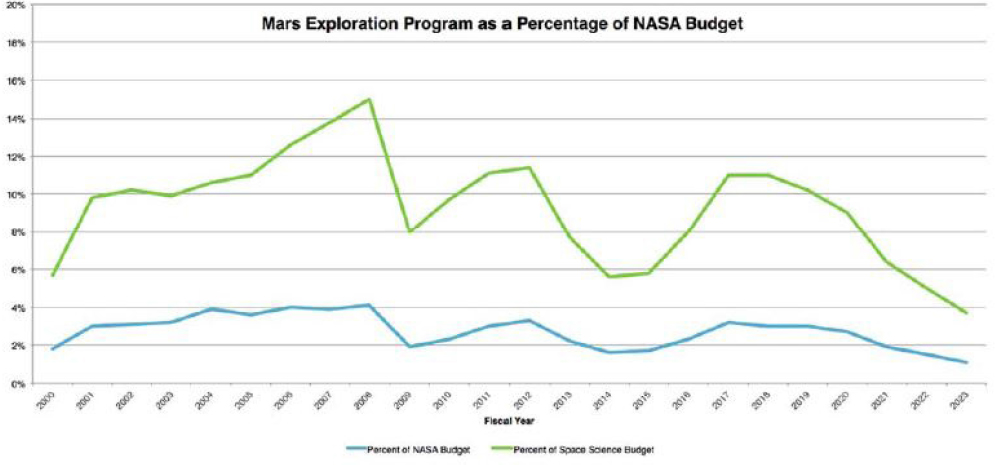
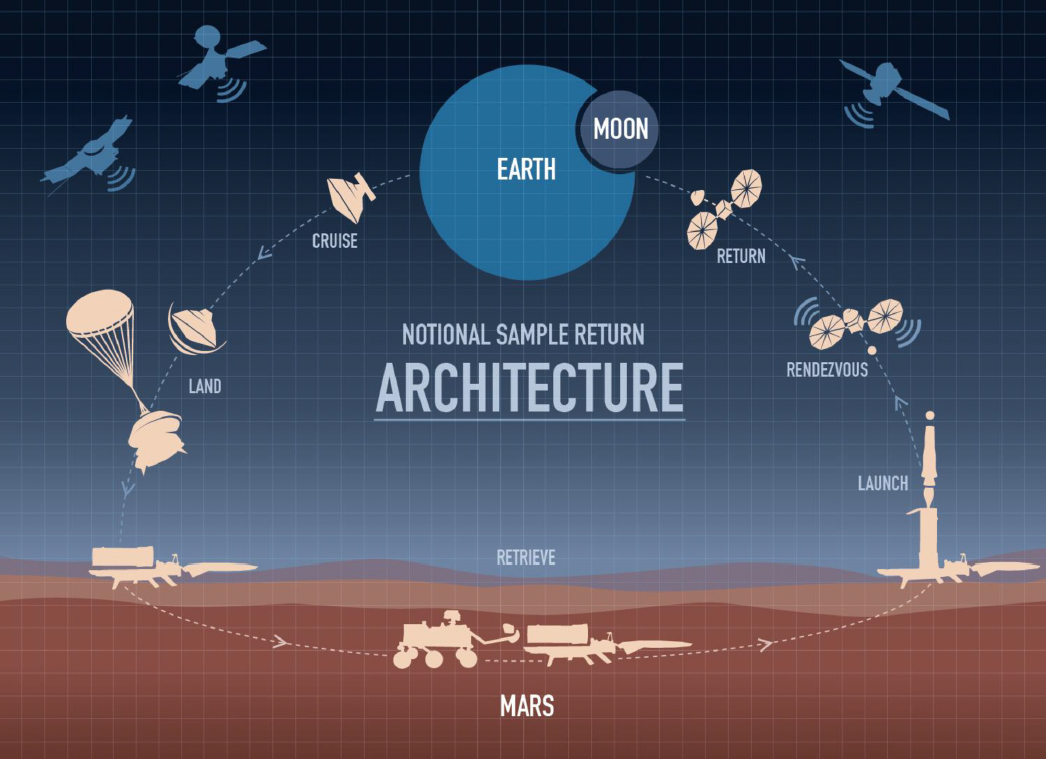
The Prospect of “Focused and Rapid” Mars Sample Return
In August 2017 NASA Associate Administrator Thomas Zurbuchen announced a concept for a “lean and rapid” MSR (NASA subsequently changed this phrase to “focused and rapid” and the committee agrees that this is a better characterization of the approach). (See Figure 5.10.) The “focused and rapid” nickname is based on the strategy of focusing future mission development on completing the two remaining steps to MSR in the decade of the 2020s, following the Mars 2020 mission. Notionally, it is enabled fiscally by (1) making the completion of MSR the sole MEP scientific objective for the 2020s, and (2) implementing the concept with strong international participation. In the focused and rapid concept, there would be no next Mars orbiter; existing assets (Odyssey, MRO, MAVEN, Trace Gas Orbiter) would continue to provide telecommunications interfaces for landed assets through Mars 2020 (also including MSL, InSight, and ExoMars).2 A U.S. Fetch Rover/MAV mission would launch at the same opportunity as a SRO provided through international collaboration, nominally in 2026. Telecommunications support for the Fetch Rover/MAV would fly on the SRO itself, mitigating the risk of aging infrastructure for the Fetch Rover/MAV. The fetch rover would have a 240-sol mission duration to retrieve samples, deliver them to the MAV’s sample return capsule (SRC), and address any anomalies before the MAV would launch. The SRO
___________________
2 The possibility of a commercial communications architecture has also been discussed.
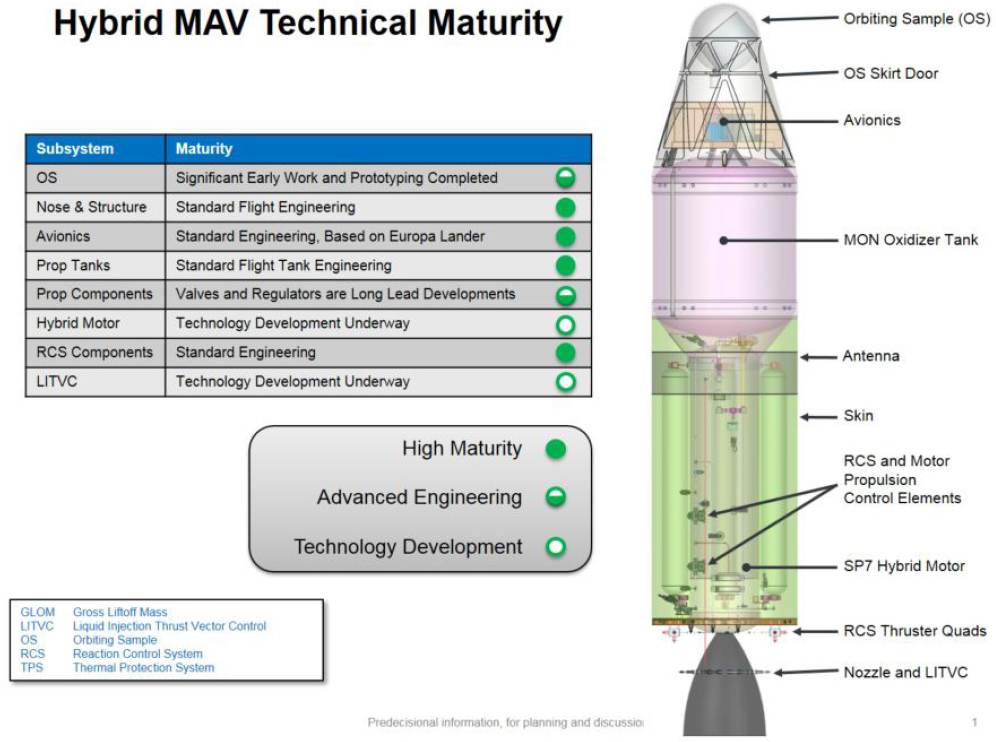
would collect the SRC containing the cached samples, and return it either directly to Earth or to cis-lunar space for astronaut retrieval.
Presentations to the committee by JPL engineers provided comprehensive descriptions of the conceptual design of the Fetch Rover/MAV. Extensive trade studies have been carried out, leading to a point design. A hybrid MAV propulsion module (oxidizer and paraffin-based fuel) is in an advanced stage of testing. (See Figures 5.11, 5.12, 5.13, 5.14, 5.15, and 5.16.) The SRC conceptual design meets all Vision and Voyages science requirements for sample return, by including with the cached sedimentary or hydrothermal and volcanic samples receptacles for fetch rover-collected regolith and an atmospheric gas sample. The scenario for capture of the SRC by the SRO has been designed and analyzed, and appears to be within current technological capabilities.
Assessment of the Current Status of the Mars Program
Based on considerations of the state of published Mars science summarized in Chapter 2, the material summarized in this chapter and the committee’s direct knowledge of the Mars program, an assessment of the Mars program status is given below. Subsection headings reiterate the subjects this committee was charged to assess.
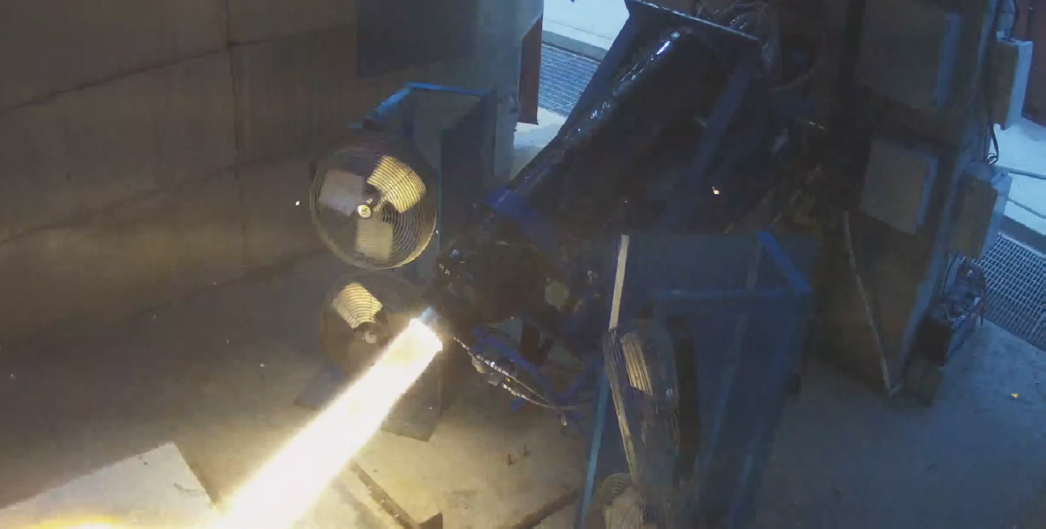
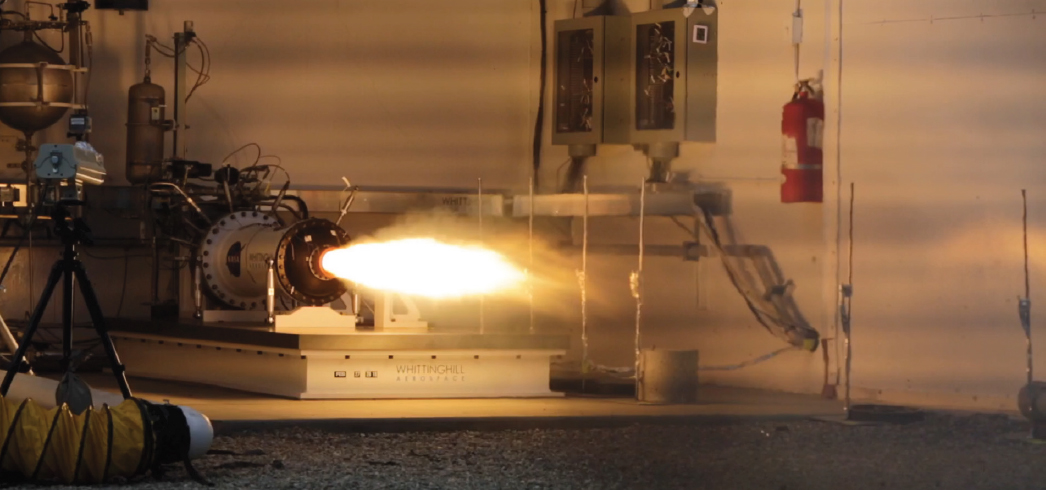
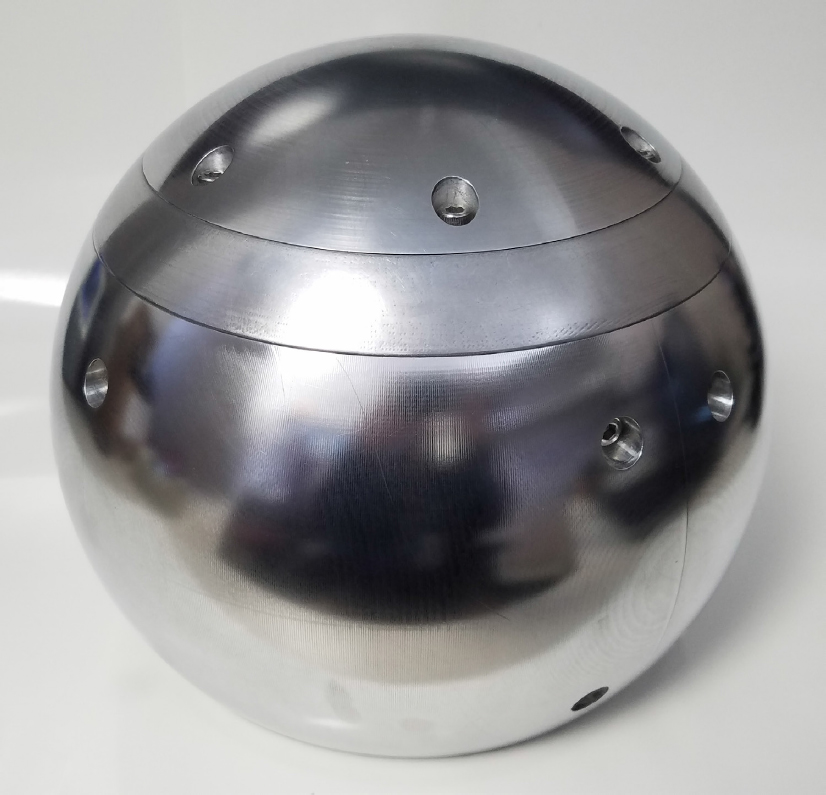
Mars Exploration Architecture and Its Responsiveness to the Strategies, Priorities, and Guidelines Put Forward by the National Academies’ Vision and Voyages and Other Relevant National Academies Mars-Related Reports
Decadal Findings and Assessment: Vision and Voyages recommended de-scoping the MAX-C mission concept if necessary to ensure that it would cost ≤$2.5 billion, and proceeding to collect at least the minimum number of samples defined by advisory groups (>20, baseline 31), from the highest priority classes of materials for sampling. In the current MEP architecture, Mars 2020 is within the cost goal and can accomplish the first two high-priority sampling objectives (lacustrine or hydrothermal sediments, unaltered volcanic rock). The Fetch Rover/MAV are being designed to collect the remaining sample types recommended by Vision and Voyages (regolith, atmosphere).
Vision and Voyages also recommended robust in situ measurements to aid in selecting the samples to be collected and to put them into context. Such measurements can be completed by the selected Mars 2020 science investigations. In fact, the selected payload provides redundancy in each type of characterization measurement recommended by the Mars 2020 Science Definition Team (chemistry, mineralogy, geologic setting).
Vision and Voyages recommended major investment in design work on a MAV, thus making significant prog-
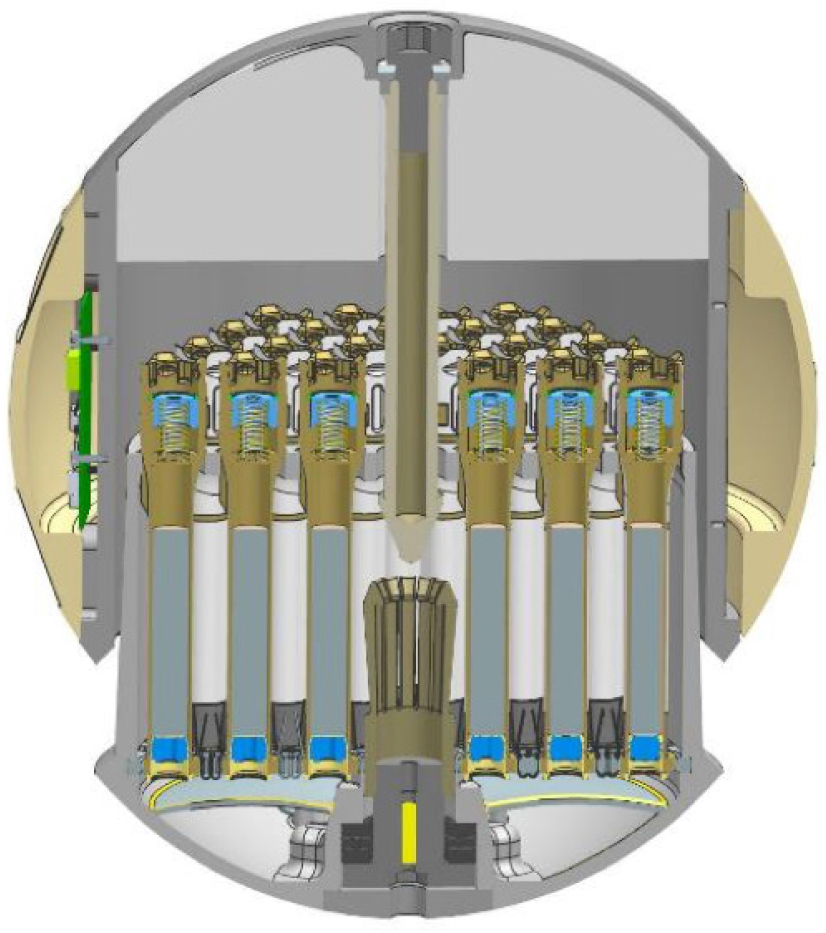
ress on the second step for sample return. The new solid rocket motor design can survive long-term exposure to low temperature, and is being tested to qualify it for flight, thus maturing that aspect of the required technology.
Vision and Voyages also recommended continuation of ongoing missions that address evolving science objectives through a senior review process. Operating missions have developed and address new science objectives that respond to emerging findings, meeting this recommendation.
Although not formally part of the MEP, the InSight Discovery mission is addressing questions about Mars’s interior that were prioritized in National Academies reports on Mars prior to Vision and Voyages.
Finding: Mars 2020 will fulfill the mandate of Vision and Voyages that Mars Sample Return take “a critical next step [by identifying and collecting] carefully selected samples from geologically diverse and well characterized sites.”
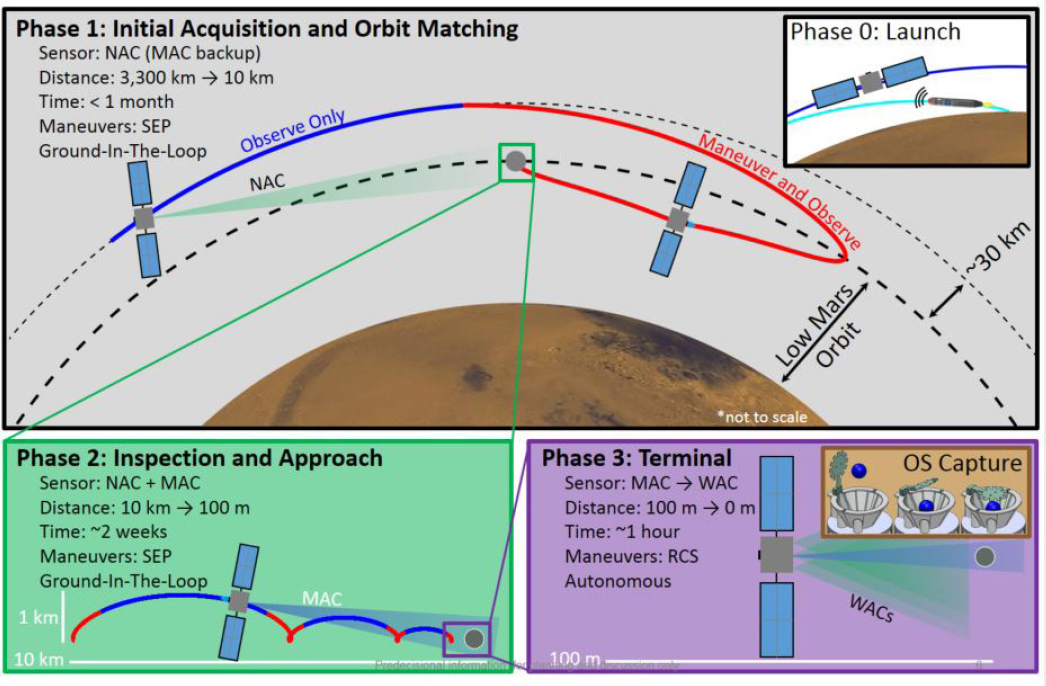
Finding: The “focused and rapid” conceptual approach to a Fetch Rover/MAV and an SRO described by NASA to the committee is on track to be fully responsive to completing the Vision and Voyages highest-priority large strategic (flagship)-class science, MSR. The detailed architecture including specific international involvement is still under conceptual development. The fiscal year 2019 budget, approved by Congress and signed by the president during the writing of this report, appears to provide funding to continue development and plan implementation.
Finding: NASA is making substantial progress on technology development that will be required for MSR. This includes, but is not limited to, the MAV propulsion system, the Sample Return Capsule, and the approach to orbital rendezvous and capture. A sample analysis and curation facility will also be required.
Recommendation: NASA should continue planning and begin implementation of its proposed “focused and rapid” architecture to return samples from the Mars 2020 mission to achieve the highest-priority decadal survey large strategic (flagship)-class science for consideration for the next decadal survey.
The Long-Term Goals of the Planetary Science Division’s MEP and the Program’s Ability to Optimize the Science Return, Given the Current Fiscal Posture of the Program
Decadal Findings and Assessment: The Mars 2020 mission will be a significant first step toward MSR and will accomplish in situ science in addition to sample collection. Mars 2020 also hosts MOXIE, a demonstration of
in situ resource utilization (oxygen extraction), which will make a meaningful step toward preparing for future human exploration.
Successful operation of MSL, InSight, the ExoMars lander, Mars 2020, and any subsequent directed or competitively selected Mars landed mission depends on orbital communications infrastructure to return adequate data to Earth. The loss of even one of the three U.S. orbiters capable of relay communications (Mars Odyssey, MRO, MAVEN) would create tactical challenges (e.g., reduction of daily passes to support operations) for continued operation of current (MER, MSL) and planned (InSight, ExoMars, Mars 2020) landed missions through the mid-2020s. Mars Odyssey is not expected to survive to the mid-2020s, MRO has experienced hardware anomalies that challenge the mission to survive until the (possibly optimistic) SRO launch date of 2026, and MAVEN already is past its nominal design lifetime.
In the program architecture described by NASA, there is no plan to replenish orbital communications infrastructure, except temporarily via the SRO associated with MSR. This lack of a long-term telecommunications infrastructure risks extended mission operations of InSight and Curiosity without international assistance. It risks or precludes extended mission operations of Mars 2020 after Earth return of the SRO, when the highly capable rover could continue in situ exploration of exobiologically relevant geologic formations, as well as any followup exploration by Discovery or New Frontiers missions, or by non-U.S. missions that currently are supported by U.S. telecommunications assets.
Finding: There is a risk that ongoing and soon-to-be landed assets on Mars will be left without telecommunications support because of the aging orbiters. The Mars telecommunications relay network is marginally able in its present form to service current and planned surface missions. The system is fragile and aging. The loss of even one of the three U.S. orbiters capable of relay communications (Mars Odyssey, MRO, MAVEN) would create tactical challenges for continued operation of current and planned landed missions beyond 2021, and compromise the ability of the MEP to continue its science return. The committee was not presented with and did not evaluate the possibility of commercially provided telecommunications capabilities to supplant telecommunications capabilities being used. Also, despite the hardware capability, there is no plan for the European Space Agency’s (ESA’s) Trace Gas Orbiter (TGO) to be used as a relay asset in the immediate future.
Recommendation: NASA should ensure the longevity of the telecommunications infrastructure at Mars to support the science return from current and planned landed assets (e.g., Mars Science Laboratory, Insight, ExoMars, Mars 2020) to mitigate the risks associated with the existing aging assets. This should not be accomplished by sacrificing the science being conducted by existing orbiters.
The Mars Exploration Architecture’s Relationship to Mars-Related Activities to Be Undertaken by Foreign Agencies and Organizations
Decadal Findings and Assessment: Mars missions are being undertaken both by NASA and by several non-U.S. space agencies. Most of the missions feature one or more international collaborations, both on foreign-led missions with U.S. participation or collaboration, and on U.S.-led missions with foreign participation or collaboration. These collaborations dramatically enhance the overall scope of Mars science being conducted, both in terms of investigations flown and investigators analyzing the returned data.
Examples of international cooperation span many nations and objectives. Mars Express (ESA) includes U.S. participating scientists on the Mars Advanced Radar for Subsurface and Ionosphere Sounding (MARSIS) radar from Italy, which was developed with JPL participation, and on the OMEGA imaging spectrometer from France. MRO (U.S.) hosts the SHARAD radar from Italy, and that team contains a strong contingent of U.S. scientists, some in leadership roles. InSight (U.S.) hosts the Seismic Experiment for Interior Structure (SEIS) seismometer from France and the Heat Flow and Physical Properties Package heat flow probe from Germany. Mars Hope (United Arab Emirates) is working with U.S. partners who will develop instruments and subsystems. The University of Colorado/Laboratory for Atmospheric and Space Physics is partnering in development of the Emirates Explora-
tion Imager (EXI), the Emirates Mars Ultraviolet Spectrometer (EMUS), the spacecraft, and mission operations. Arizona State University is partnering in development of the Emirates Mars Infrared Spectrometer (EMIRS), and the Johns Hopkins Applied Physics Laboratory is providing the telecommunications sub-system. The Mars Moons Explorer mission (MMX, Japan) is hosting the NASA-funded MEGANE neutron and gamma-ray spectrometer being provided by the Johns Hopkins Applied Physics Laboratory. The Mars 2020 rover (U.S.) hosts the Mars Environmental Dynamics Analyzer meteorological package (Spain), the RIMFAX ground-penetrating radar to provide additional context for collected samples (Norway), and SuperCam (France), which provides microscopic imaging, LIBS measurements of chemistry, and Raman and reflectance spectroscopic measurements of mineralogy. Last, the ExoMars rover (ESA) hosts the Mars Organic Molecule Analyzer experiment (U.S.) to search for and characterize even trace levels of organic molecules.
In addition, there are several notable examples of close international collaborations between teams that pursue complementary or related scientific objectives. The Mars Express/OMEGA and MRO/CRISM teams, the Mars Express/MARSIS and MRO/SHARAD teams, and the MAVEN, Mars Express, and TGO teams have all collaborated closely.
Undeniably, there have been issues with international partnerships. Late delivery of SEIS caused a two-year delay in the launch of InSight. A U.S. component of the ExoMars Trace Gas Orbiter payload was solicited and selected but then canceled due to lack of adequate U.S. funding. Limitations on funding by the Italian Space Agency led to temporary suspension of SHARAD operations and data product generation.
On balance, international collaborations have been positive. The MEP can benefit from many planned international collaborations and missions over the coming decades. Perhaps the largest impending collaboration would be on MSR. In a recently signed Letter of Intent, NASA and ESA described a potential international collaboration in which ESA might provide a Fetch Rover for the MAV, and NASA would provide the SRC for an ESA-led SRO. Maintaining political support for that collaboration would benefit from strong incentives such as sharing of the returned samples. There is precedent for distributing returned samples among nations who contribute to a sample return mission. Returned samples are traditionally allocated to individual researchers among the full international community after a period of preliminary examination.
Finding: Missions to Mars being led by non-U.S. entities (including ExoMars, Trace Gas Orbiter, Mars HOPE, and Mars Moon Explorer) benefit and significantly augment the U.S. MEP and lead to a broader scientific exploration of Mars.
Recommendation: NASA should immediately work to reinvigorate international cooperation to help implement Mars exploration more effectively and affordably. This could involve international contributions of instruments, other hardware, or whole missions that complement what the United States is providing or leading, as suggested in Vision and Voyages and as proposed in the “focused and rapid” concept for Mars sample return.
The Extent to Which the Mars Exploration Architecture Represents a Reasonably Balanced Mission Portfolio
Decadal Findings and Assessment: Major new science questions have emerged since Vision and Voyages that will not be addressed by MSR or any U.S. mission now in development or operation. These questions center on ancient habitable environments, Amazonian climate change, and the dynamic nature of present-day Mars:
- Ancient Mars: In which, if any, of the ancient habitable environments did life exist? If in some but not others, why? What do the answers imply for emergence of life on small terrestrial exoplanets?
- Amazonian Mars: What are the distribution and characteristics of shallow ground ice? What processes formed shallow, excess ice? What is the history of climatic variations recorded in excess ice? How do
- those climatic variations relate to obliquity variations possibly recorded in polar deposits, and to release or refreezing of CO2 ice buried in the polar caps?
- Modern Mars: What processes form RSL and what is the role of brines or deliquescence, if any? If water is involved, what is its source? What is the source of methane releases, and why are they episodic? Why does the methane appear and disappear so quickly? What is the relationship between atmospheric processes observed to operate seasonally and annually and climate change operating on the 104- to 107-year time scales?
A majority of high-priority Mars science questions that have emerged since Vision and Voyages cannot be fully addressed by single, stand-alone missions. The science and exploration arguments for an ongoing Mars program include (1) that Mars science questions cut across multiple important decadal survey science themes; (2) the potential for life to exist or have existed on Mars and the inability of a single mission to definitively determine in what environments it existed and did not exist; and (3) the need to prepare for potential future human missions to Mars.
Science questions and preparation for human exploration overlap. For example, investigating the distribution of shallow excess ice will quantify an important resource to provide astronauts with water and oxygen (Dundas et al., 2018). Improved understanding of the hydrated mineral assemblages that record ancient habitable environments will characterize their recoverable water contents; water resources recoverable from those deposits are highly uncertain at present (Murchie et al., 2016; Bishop et al., 2017).
Programmatic arguments for an ongoing program include the requirement for technology development for future missions and the scientific and technical interplay among missions. A prime example of the latter is the need for meteorological measurements and high-resolution orbital remote sensing to support surface missions. At the present time, NASA has no plans to replenish the capabilities of MRO for high-resolution imaging that have proven so important for landing-site certification, including monitoring of the meteorology required for entry, descent, and landing, and high-resolution imaging to support strategic planning of landed science.
ESA’s ExoMars Trace Gas Orbiter will follow up on the recent confirmation of methane. However, the U.S. MEP has no mechanism beyond the Discovery Program to investigate other compelling new discoveries since the last decadal survey, either scientifically or to assess resource potential for future human exploration.
Finding: There are strong arguments for continuing Mars exploration through a program rather than as a series of independent, unconnected missions. Although the current MEP has a broad focus across most areas of Mars as a system, the program going forward beyond Mars 2020 is focused entirely on sample return. There is currently no vision for a program beyond sample return, either for scientific investigation or to prepare for future human exploration.
Finding: There are no plans at present to replace the site characterization and monitoring capabilities of MRO that have proven important for landing-site certification and strategic planning of landed science.
Finding: The MEP has not yet put forward a complete architecture and attendant strategic plan that addresses the long-term goals of Mars exploration and optimizes science return across the spectrum of past, current, and future missions.
Recommendation: NASA should develop a comprehensive Mars Exploration Program (MEP) architecture, strategic plan, management structure, partnerships (including commercial partnerships), and budget that address the science goals for Mars exploration outlined in Vision and Voyages. The architecture and strategic plan should maximize synergy among existing and future domestic and international missions, ensure a healthy and comprehensive technology pipeline at the architectural (versus individual mission) level, and ensure sustenance of foundational infrastructure (telecommunications, imaging for site certification, etc.). This approach of managing the MEP as a program, rather than just as a series of missions, enables science optimization at the architectural level. This activity should include assurance that appropriate NASA/MEP management structure and international partnerships are in place to enable Mars sample return.
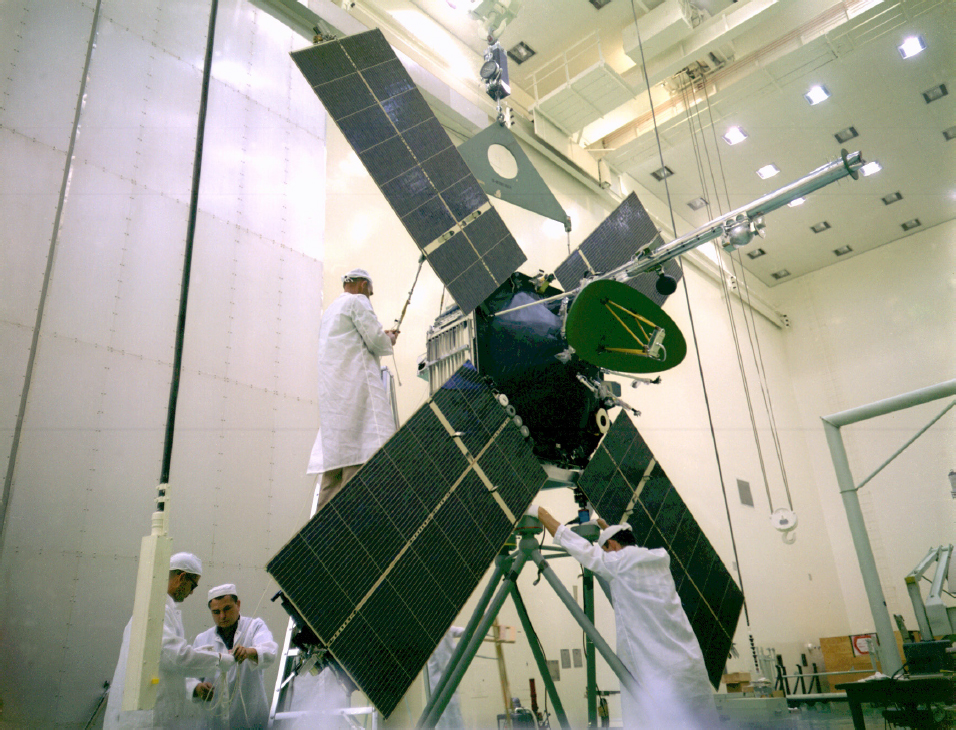
SUMMARY OF THE CURRENT STATUS OF THE MARS EXPLORATION PROGRAM
NASA has been exploring Mars for over 50 years. (See Figure 5.17.) Mars is a high priority for scientific study because of its strong relevance to all of the science themes of Vision and Voyages, and because it is a destination for future human explorers. MEP has made additional discoveries since Vision and Voyages that reinforce this high priority and pose important new science questions. Mars 2020 will take the important first step toward the highest science priority in Vision and Voyages, MSR, by collecting and caching carefully selected and well-documented samples. The MEP currently lacks, and should promptly develop, a comprehensive plan, architecture, management and international partnering approach, and funding profile to implement the next steps in Mars exploration including and beyond completion of MSR.
REFERENCES
Bishop, J.L., L.L. Baker, A.G. Fairén, C. Gross, M.A. Velbel, E.B. Rampe, and J.R. Michalski. 2017. “Unraveling the Diversity of Early Aqueous Environments and Climate on Mars Through the Phyllosilicate Record.” Presentation to the 48th Lunar and Planetary Science Conference.
Callahan, J., and C. Dreier. 2017. “Mars in Retrograde: A Pathway to Restoring NASA’s Robotic Mars Exploration Program.” Presentation to The Planetary Society. http://planetary.s3.amazonaws.com/assets/pdfs/advocacy/2017/Mars-in-Retrograde--The-Planetary-Society---2017.pdf.
Dundas, C.M., A.M. Bramson, L. Ojha, J.J. Wray, M.T. Mellon, S. Byrne, A.S. McEwen, et al. 2018. Exposed subsurface ice sheets in the Martian mid-latitudes. Science 359(6372):199-201.
Murchie, S.L., B.L. Ehlmann, and R.E. Arvidson. 2016. “Geological Water Resources for Humans on Mars: Constraints from Orbital Spectral Mapping and In Situ Measurements.” Presentation to the 47th Lunar and Planetary Science Conference.
NRC (National Research Council). 2007. An Astrobiology Strategy for the Exploration of Mars. The National Academies Press, Washington, DC.
NRC. 2011. Vision and Voyages for Planetary Science in the Decade 2013-2022. The National Academies Press. Washington, DC.





















